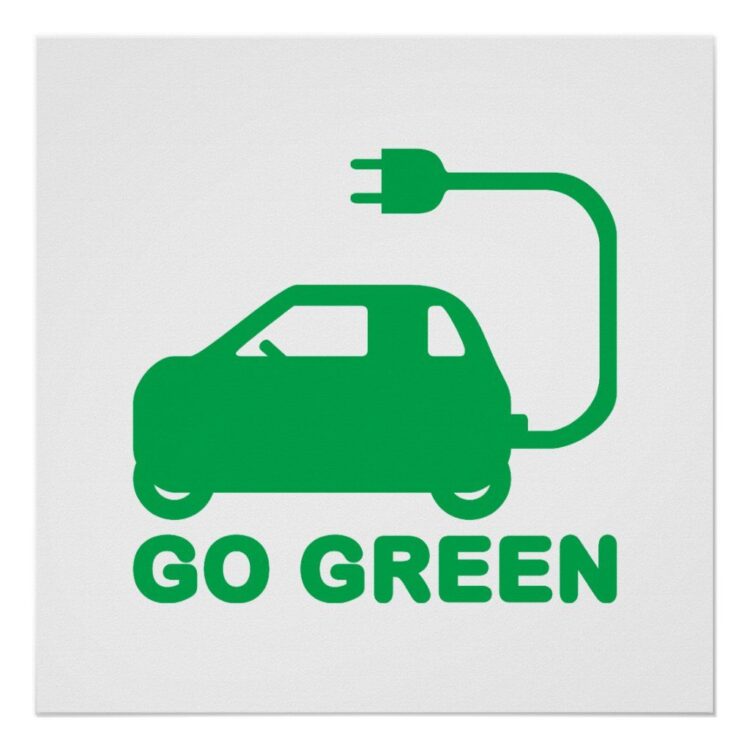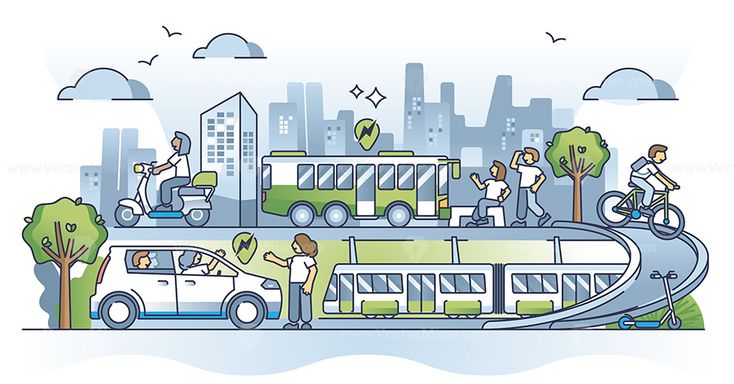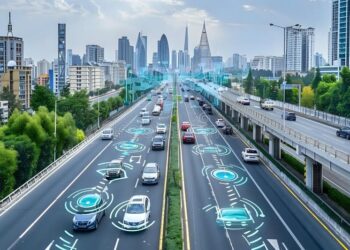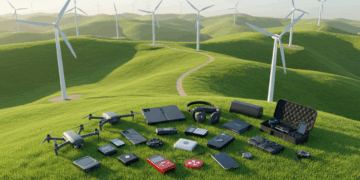The global automotive industry is undergoing its most profound transformation in over a century. Fuelled by environmental urgency, technological breakthroughs, and shifting consumer preferences, Electric Vehicles (EVs) are rapidly moving from niche alternatives to mainstream contenders, leading a monumental green shift in transportation. This isn’t merely about a change in powertrains; it represents a comprehensive reimagining of vehicle design, energy infrastructure, urban planning, and even the very concept of personal mobility. EVs are proving to be a pivotal technology in the fight against climate change, promising cleaner air, quieter cities, and a more sustainable future for generations to come.
The Urgent Call for Change: Why EVs Are Essential
To fully grasp the critical momentum behind Electric Vehicles, we must first understand the pressing environmental and economic challenges that traditional, internal combustion engine (ICE) vehicles have posed for decades.
A. Environmental Imperative: Tackling Climate Change
Internal combustion engine vehicles are a major contributor to greenhouse gas emissions and air pollution, impacting both the planet’s health and human well-being.
- Greenhouse Gas Emissions: Cars and trucks powered by fossil fuels emit vast quantities of carbon dioxide (CO2), a primary greenhouse gas responsible for global warming and climate change. The transportation sector is consistently one of the largest sources of these emissions globally.
- Air Pollution and Public Health: Beyond CO2, ICE vehicles release harmful pollutants like nitrogen oxides (NOx), particulate matter (PM2.5), carbon monoxide (CO), and volatile organic compounds (VOCs). These directly contribute to smog, acid rain, and severe respiratory and cardiovascular diseases, particularly in urban areas, leading to millions of premature deaths worldwide annually.
- Dependence on Finite Resources: Fossil fuels (oil, gas) are finite resources. Their extraction, transportation, and consumption carry significant environmental risks, including oil spills, habitat destruction, and geopolitical instability. A shift away from these resources is crucial for long-term energy security and sustainability.
- Noise Pollution: The constant hum and roar of traditional traffic contribute significantly to noise pollution in cities, impacting quality of life, stress levels, and even wildlife. EVs are inherently quieter, especially at lower speeds, offering a respite from urban din.
B. Economic and Geopolitical Drivers
The move to EVs is also driven by powerful economic forces and the desire for greater energy independence.
- Fuel Price Volatility: Consumers and businesses are constantly exposed to the unpredictable fluctuations of global oil prices, which can significantly impact household budgets and operational costs. EVs offer more stable “fuel” costs based on electricity rates.
- Energy Security: Nations heavily reliant on imported oil face geopolitical vulnerabilities and trade imbalances. Shifting to electricity, which can be generated from diverse domestic sources (renewables, nuclear, hydro), enhances national energy security.
- Technological Advancement and Cost Reduction: Rapid advancements in battery technology, electric motors, and power electronics have dramatically improved EV range, performance, and reliability, while simultaneously driving down manufacturing costs. This makes EVs increasingly competitive with ICE vehicles.
- Job Creation and New Industries: The transition to EVs is fostering new industries around battery manufacturing, charging infrastructure, smart grid integration, and specialized EV components, creating new economic opportunities and jobs.
These powerful factors collectively underscore why the shift to electric vehicles is not just a trend but a necessary and irreversible transformation for a more sustainable and resilient future.
The EV Ecosystem: Beyond Just the Car
Understanding the “green shift” driven by EVs requires looking beyond the vehicle itself to the broader ecosystem of technologies and infrastructures that enable its widespread adoption.
A. Battery Technology: The Heart of the EV
The battery is arguably the most critical component of an EV, determining its range, performance, charging speed, and overall cost.
- Lithium-Ion Dominance: Currently, lithium-ion batteries are the industry standard due to their high energy density and relatively long cycle life. However, research is continually pushing the boundaries.
- Solid-State Batteries: Considered the “holy grail” of EV batteries, solid-state technology promises higher energy density (longer range), faster charging, enhanced safety (no liquid electrolyte), and potentially lower costs. They are still in development but show immense promise for the near future.
- Battery Management Systems (BMS): Sophisticated software and hardware systems that monitor and control battery parameters (voltage, current, temperature) to optimize performance, extend lifespan, and ensure safety. A well-designed BMS is crucial for EV reliability.
- Recycling and Second Life: As millions of EV batteries reach end-of-life, robust recycling infrastructure is essential to recover valuable materials (lithium, cobalt, nickel) and mitigate environmental impact. Batteries also have a “second life” potential for grid-scale energy storage before full recycling.
B. Charging Infrastructure: The New Filling Station
A ubiquitous and efficient charging network is fundamental to overcoming range anxiety and accelerating EV adoption.
- Level 1 Charging (AC): Standard household outlets (120V in North America, 230V elsewhere). Slowest charging, ideal for overnight top-ups.
- Level 2 Charging (AC): Uses 240V outlets, common for home chargers and public stations. Offers faster charging, typically providing 20-30 miles of range per hour.
- DC Fast Charging (DCFC): The fastest public charging option, using direct current. Can provide hundreds of miles of range in under an hour, crucial for long-distance travel. Standards like CCS, CHAdeMO, and NACS (Tesla’s North American Charging Standard, now adopted by others) are evolving.
- Wireless Charging: Still largely experimental for cars but offers convenience for autonomous vehicles and public parking.
- Smart Charging and V2G (Vehicle-to-Grid): Smart charging optimizes charging times to coincide with lower electricity prices or higher renewable energy availability. Vehicle-to-Grid (V2G) technology allows EVs to discharge power back to the grid during peak demand, turning EVs into distributed energy storage units, supporting grid stability.
C. Renewable Energy Integration: Fueling the Green Promise
The true “green” potential of EVs is realized when they are powered by electricity generated from renewable sources.
- Solar and Wind Power: As grids transition to solar, wind, and other renewables, the carbon footprint of charging EVs dramatically shrinks. Policy and investment in renewable energy are thus critical for the long-term sustainability of EVs.
- Grid Modernization (Smart Grid): EVs, especially with V2G capabilities, necessitate a more intelligent, resilient, and flexible power grid. Smart grids can manage bidirectional energy flow, optimize charging loads, and integrate distributed renewable energy sources more effectively.
- Home Energy Management: Integrating EV charging with home solar panels and battery storage systems allows homeowners to charge their vehicles with self-generated clean energy, maximizing environmental benefits and energy independence.
D. Software and Connectivity: The Brains of the EV
Modern EVs are essentially computers on wheels, heavily reliant on software and connectivity for their advanced features.
- Over-the-Air (OTA) Updates: Allows manufacturers to deliver software updates, new features, bug fixes, and even performance enhancements directly to the vehicle, similar to smartphone updates, without requiring a dealership visit.
- Infotainment Systems: Advanced, integrated systems offering navigation, media, connectivity, and vehicle controls, often powered by large touchscreens.
- Advanced Driver-Assistance Systems (ADAS) & Autonomous Driving: Features like adaptive cruise control, lane-keeping assist, automatic parking, and eventually fully autonomous driving are all software-driven, relying on sophisticated sensors and AI algorithms.
- Vehicle Telematics and Data Analytics: EVs generate vast amounts of data on driving patterns, battery health, and system performance. This data can be used for predictive maintenance, insurance models, and future product development.
Transformative Advantages of Electric Vehicles
The widespread adoption of Electric Vehicles offers a multitude of profound benefits that extend far beyond simply reducing tailpipe emissions, impacting the environment, economy, and society at large.
A. Significant Reduction in Emissions and Air Pollution
This is the most direct and widely recognized benefit, driving substantial improvements in environmental health.
- Zero Tailpipe Emissions: EVs produce absolutely no tailpipe emissions. This directly reduces local air pollutants (NOx, PM2.5, CO) in urban areas, leading to cleaner air, fewer respiratory illnesses, and healthier cities.
- Reduced Carbon Footprint (Life Cycle): While battery production and electricity generation have their own carbon footprints, studies consistently show that over their entire life cycle, EVs generate significantly less greenhouse gas emissions than comparable ICE vehicles, especially as electricity grids become greener.
- Mitigation of Climate Change: By replacing fossil fuel consumption in transportation, EVs play a crucial role in curbing greenhouse gas emissions, contributing directly to global efforts to combat climate change and meet emissions targets.
- Quieter Environments: EVs are significantly quieter than ICE vehicles, particularly at lower speeds. This reduction in noise pollution creates more peaceful urban environments, benefiting human well-being and local wildlife.
B. Lower Running and Maintenance Costs
Beyond the purchase price, EVs often prove to be more economical to own and operate over their lifespan.
- Reduced Fuel Costs: Electricity is generally cheaper per mile than gasoline or diesel, especially when charged at home during off-peak hours. Fuel cost savings can be substantial over the vehicle’s lifetime.
- Lower Maintenance Expenses: EVs have far fewer moving parts than ICE vehicles (no engine oil changes, spark plugs, timing belts, exhaust systems, etc.). This translates to significantly lower maintenance costs and less frequent servicing needs.
- Government Incentives: Many governments worldwide offer tax credits, rebates, or other incentives for EV purchases, lowering the upfront cost and accelerating adoption.
- Potentially Higher Resale Value: As the market shifts, well-maintained EVs may retain a higher resale value due to their advanced technology, lower operating costs, and longer lifespan compared to ICE counterparts.
C. Enhanced Driving Experience and Performance
EVs offer a distinct and often superior driving experience that appeals to a wide range of consumers.
- Instant Torque and Rapid Acceleration: Electric motors deliver maximum torque from a standstill, providing incredibly smooth, immediate, and often exhilarating acceleration. This makes EVs feel nimble and responsive.
- Quiet and Smooth Ride: The absence of engine noise and vibrations, combined with fewer mechanical components, results in a remarkably quiet and smooth driving experience, reducing driver fatigue.
- Improved Handling (Lower Center of Gravity): EV batteries are typically located in the floor of the vehicle, resulting in a very low center of gravity. This enhances stability, reduces body roll, and often leads to superior handling characteristics.
- Advanced Features and Connectivity: EVs often come equipped with cutting-edge infotainment systems, advanced driver-assistance features, and over-the-air software updates, providing a constantly evolving and connected driving experience.
D. Energy Independence and Grid Resilience
Widespread EV adoption has significant implications for national energy security and the stability of electrical grids.
- Reduced Reliance on Fossil Fuels: By shifting transportation energy demand from imported oil to domestically produced electricity (increasingly from renewable sources), nations can significantly enhance their energy independence and reduce exposure to geopolitical supply disruptions.
- Support for Renewable Energy Integration: EVs can act as distributed energy storage units. Through smart charging and V2G (Vehicle-to-Grid) capabilities, they can absorb excess renewable energy when generation is high and feed it back to the grid during peak demand, helping to balance the grid and accelerate the transition to renewables.
- Decentralized Energy System: EVs, especially when combined with home solar and battery storage, promote a more decentralized energy system, increasing resilience against large-scale grid failures.
E. New Economic Opportunities and Innovation
The EV transition is not just a technological shift but also an economic catalyst, fostering new industries and job creation.
- Battery Manufacturing and Recycling: The massive demand for EV batteries is creating new giga-factories and fostering innovation in battery chemistry and recycling technologies.
- Charging Infrastructure Development: A new industry dedicated to designing, installing, and managing charging networks is rapidly expanding, creating jobs in infrastructure, software, and services.
- Smart Grid Technologies: The need to integrate EVs into the grid is driving innovation in smart grid technologies, energy management systems, and V2G solutions.
- Specialized EV Component Manufacturing: The unique components of EVs (electric motors, power electronics, specialized thermal management systems) are fostering new supply chains and manufacturing capabilities.
Challenges and Considerations in the EV Transition
Despite the compelling advantages, the path to widespread EV adoption is not without its hurdles. Addressing these challenges is crucial for a smooth and equitable transition.
A. Upfront Purchase Cost
While operating costs are lower, the initial purchase price of EVs remains a significant barrier for many consumers. Battery technology, though becoming cheaper, is still a major cost component. Government incentives help, but affordability remains a key challenge, especially in developing markets.
B. Charging Infrastructure Availability and Speed
“Range anxiety” is often cited as a top concern for potential EV buyers, stemming from the perceived lack of sufficient public charging infrastructure, especially DC fast chargers for long-distance travel. The rollout of charging stations needs to accelerate significantly, be geographically widespread, and offer reliable, high-speed charging to truly match the convenience of gasoline refueling.
C. Battery Raw Material Sourcing and Supply Chain Ethics
The production of EV batteries relies on critical raw materials like lithium, cobalt, nickel, and manganese. The sourcing of these materials raises significant environmental and ethical concerns, including:
- Mining Impact: Environmental degradation (water consumption, habitat destruction) and pollution associated with mining operations.
- Labor Practices: Reports of unethical labor practices, including child labor, in certain cobalt mining regions.
- Supply Chain Concentration: A high concentration of raw material processing and battery manufacturing in a few countries creates geopolitical vulnerabilities.
Sustainable and ethical sourcing, along with robust recycling, are crucial to ensure the true “green” credentials of EVs.
D. Grid Capacity and Reliability
A massive influx of EVs will significantly increase electricity demand. While power grids typically have sufficient overall capacity, ensuring that this demand can be met at local levels without stressing distribution networks, especially during peak charging times, is a challenge. Grid modernization, smart charging solutions, and energy storage investments are essential to maintain grid reliability and prevent blackouts.
E. Recycling and End-of-Life Battery Management
As the first wave of EV batteries reaches end-of-life (typically 8-10 years for automotive use, followed by a second life), developing efficient, scalable, and environmentally sound battery recycling processes is critical. Recovering valuable materials not only reduces reliance on new mining but also minimizes hazardous waste. This infrastructure is still nascent but rapidly developing.
F. Charging Time vs. Refueling Time
Despite advancements in fast charging, charging an EV still takes significantly longer than refueling an ICE vehicle. While most charging happens overnight at home, long-distance travel requires planning for charging stops. This time difference remains a psychological barrier for some consumers.
G. Vehicle Weight and Road Wear
EVs, particularly those with larger battery packs, tend to be significantly heavier than comparable ICE vehicles. This increased weight can lead to greater road wear and tear, potentially necessitating adjustments to road maintenance strategies and infrastructure funding models.
H. Consumer Education and Awareness
Despite growing buzz, many consumers still lack a full understanding of EV benefits, charging practicalities, range capabilities, and ownership costs. Effective consumer education and awareness campaigns are vital to dispel myths and accelerate adoption.
Best Practices for Accelerating the EV Green Shift
Accelerating the global transition to electric vehicles requires concerted efforts from governments, industries, and consumers, focusing on policy, infrastructure, and innovation.
A. Robust Government Incentives and Policies
Governments play a critical role in catalyzing EV adoption through a combination of incentives and regulations.
- Purchase Subsidies and Tax Credits: Direct financial incentives for buyers significantly reduce the upfront cost barrier.
- Charging Infrastructure Funding: Investing in public charging networks, particularly DC fast chargers along major highways and in urban centers.
- Emissions Standards and Mandates: Implementing strict emissions regulations and setting targets for EV sales proportions to drive manufacturer innovation and market supply.
- Support for Battery Production and Recycling: Policies that encourage domestic battery manufacturing, promote ethical raw material sourcing, and incentivize battery recycling infrastructure.
- Smart Grid Investments: Funding modernization of electrical grids to handle increased EV load and integrate renewables.
B. Expanding and Diversifying Charging Infrastructure
A key to alleviating range anxiety is to make charging as convenient as refueling.
- Ubiquitous Public Charging: Rapid deployment of Level 2 and DC fast chargers in urban areas, workplaces, retail locations, and along major travel corridors.
- Residential Charging Solutions: Incentivizing or subsidizing home charger installation for single-family homes and developing solutions for multi-unit dwellings.
- Standardization: Promoting common charging standards (like NACS) to reduce fragmentation and improve user experience across different vehicle brands.
- Reliability and Maintenance: Ensuring that public charging stations are consistently functional and well-maintained.
C. Continuous Innovation in Battery Technology
Investment in research and development for next-generation battery technologies is paramount.
- Higher Energy Density: Batteries that offer longer range in smaller, lighter packages.
- Faster Charging Speeds: Technologies that allow for significantly quicker charging times, rivalling gasoline refueling.
- Improved Safety and Durability: Enhancing the inherent safety of battery chemistries and extending their lifespan.
- Lower Cost Materials: Research into battery chemistries that reduce reliance on expensive or ethically problematic raw materials.
D. Developing Sustainable Supply Chains and Recycling
Ensuring the entire EV lifecycle is truly sustainable requires a focus on raw materials and end-of-life management.
- Ethical Sourcing Audits: Implementing strict auditing and certification programs for raw material mines and supply chains to ensure ethical labor practices and environmental responsibility.
- Advanced Battery Recycling: Scaling up technologies and infrastructure for efficient and cost-effective recycling of EV batteries, recovering valuable minerals.
- Second-Life Applications: Developing robust markets and technologies for repurposing EV batteries for grid-scale energy storage or other applications before recycling.
E. Integrating EVs with Smart Grids and Renewables
Maximizing the environmental benefits and supporting grid stability requires deep integration of EVs with energy systems.
- Smart Charging Programs: Incentivizing users to charge their EVs during off-peak hours or when renewable energy generation is high.
- Vehicle-to-Grid (V2G) Deployment: Pilot programs and commercial rollouts of V2G technology, allowing EVs to provide power back to the grid.
- Local Energy Ecosystems: Promoting the integration of EVs with residential solar and home battery storage systems.
F. Manufacturer Commitment and Diverse Model Offerings
Automakers play a crucial role by expanding their EV offerings and committing to electrification.
- Diverse EV Models: Offering a wide range of EV models across all vehicle segments (sedans, SUVs, trucks, affordable options) to cater to diverse consumer needs and preferences.
- Competitive Pricing: Continuously working to reduce the manufacturing cost of EVs to make them price-competitive with ICE vehicles even without incentives.
- Strong Marketing and Education: Actively educating consumers about the benefits and practicalities of EV ownership.
G. Addressing Policy Gaps for Heavy-Duty Vehicles
While passenger cars are a focus, heavy-duty vehicles (trucks, buses) are significant emitters. Developing policies, charging infrastructure, and EV models specifically for the commercial and freight sectors is essential for a complete green shift.
H. Cross-Sector Collaboration
The EV transition requires unprecedented collaboration between automakers, energy companies, utility providers, urban planners, technology firms, and governments to build a seamless and robust EV ecosystem.
The Future Trajectory of Electric Vehicles
The trajectory of Electric Vehicles is one of accelerating growth and technological convergence, promising a future far removed from today’s transportation norms.
A. Universal Charging Standards and Ultra-Fast Charging
The fragmented charging landscape will likely consolidate around a few dominant standards (e.g., NACS, CCS), simplifying the user experience. Ultra-fast charging, capable of adding hundreds of miles of range in mere minutes, will become more common, rivaling traditional refueling times.
B. Solid-State Battery Revolution
The commercialization of solid-state batteries is expected to be a game-changer. These batteries promise:
- Dramatic Range Increase: Enabling ranges of 500+ miles on a single charge.
- Ultra-Fast Charging: Charging to 80% in 10-15 minutes or less.
- Enhanced Safety: Eliminating the risk of thermal runaway associated with liquid electrolytes.
- Smaller, Lighter Packs: Allowing for more interior space or lighter vehicles.
C. Fully Autonomous Electric Fleets
The synergy between electric powertrains and autonomous driving technology is profound. Future cities will likely see fully autonomous electric vehicle fleets (robotaxis, delivery vehicles) operating 24/7. This will optimize vehicle utilization, reduce congestion, and further lower per-mile transportation costs.
D. Vehicle-to-Everything (V2X) Integration
Beyond V2G, EVs will become fully integrated nodes in smart ecosystems through Vehicle-to-Everything (V2X) communication. This includes:
- V2H (Vehicle-to-Home): Powering homes during outages or peak demand.
- V2L (Vehicle-to-Load): Powering tools or appliances directly from the car’s battery.
- V2I (Vehicle-to-Infrastructure): Communicating with smart road infrastructure for traffic optimization and safety.
- V2V (Vehicle-to-Vehicle): Direct communication between vehicles for accident avoidance and traffic flow.
E. Swappable Batteries and Modular Platforms
While not universal, battery swapping (especially for commercial fleets or specific consumer segments) might see a resurgence, allowing for near-instant “refueling.” Vehicle platforms will become even more modular, allowing for diverse body styles and functionalities on a common EV skateboard chassis, accelerating new model development.
F. Hyper-Personalization and Digital Mobility Services
Future EVs will offer unprecedented levels of hyper-personalization through software and AI, adapting to individual driver preferences and habits. The focus will shift from vehicle ownership to seamless mobility as a service (MaaS), integrating ride-sharing, public transport, and micro-mobility solutions into a single, personalized experience.
G. Circular Economy for EV Materials
The emphasis on a circular economy for EV materials will intensify. Advanced recycling technologies will recover nearly all valuable materials from batteries and other EV components. This will create a closed-loop system, reducing the environmental footprint of mining and ensuring sustainable material supply for future EV generations.
Conclusion
Electric Vehicles are undeniably driving a monumental green shift, fundamentally reshaping the global transportation landscape. They offer compelling solutions to the urgent challenges of climate change, air pollution, and reliance on finite fossil fuels. Beyond their environmental benefits, EVs deliver significant economic advantages through lower running costs and foster exciting new industries and innovations.
While the transition presents notable hurdles, including upfront costs, charging infrastructure development, and ethical sourcing of raw materials, concerted efforts from governments, industries, and consumers are actively addressing these. The future of EVs promises even greater advancements, from revolutionary battery technologies and universal charging networks to fully autonomous fleets and deep integration with smart energy grids. As technology progresses and infrastructure matures, the Electric Vehicle will not just be a mode of transport but a cornerstone of a cleaner, more connected, and truly sustainable future. This shift is not merely an option; it’s an imperative for the well-being of our planet and generations to come.










